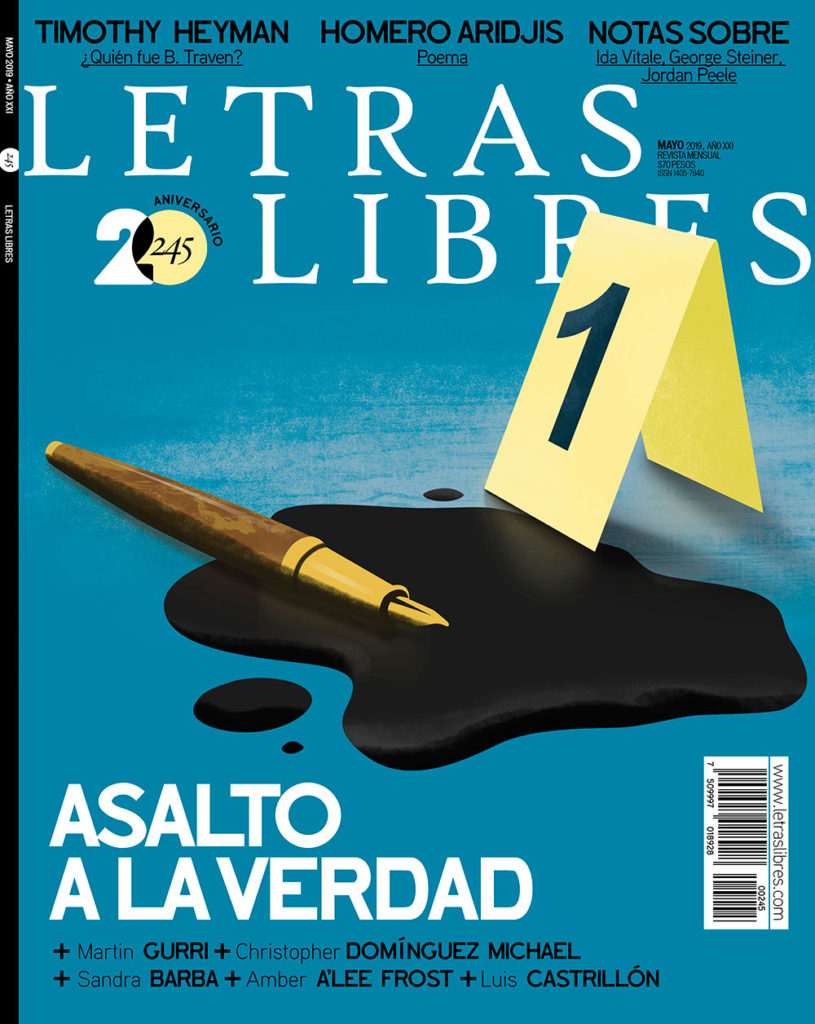
B. Traven, the naturalized Mexican who wrote in German and English, was an internationally best-selling novelist many of whose works were made into into movies, most famously The Treasure of the Sierra Madre, starring Humphrey Bogart. In Mexico he remains immensely respected: recently, decades after his death, his life and works were celebrated with a splashy, crowd-pleasing show at Mexico City’s Museo de Arte Moderno. But who was B. Traven? Where did he come from? Why, really, did he come to Mexico? And why was he so reclusive, and so fond of pseudonyms?
Many a member of the literary cognoscenti will tell you that the B. stood for Bruno. Not so. Ret Marut? Not so. Was he Prussian, Bavarian, Norwegian, American? Any number of claims and theories have been put forth over the years, one or more of which you can ever and always find, depending on who last logged in to edit that Maoist mashup otherwise known as Wikipedia.
In this month’s Letras Libres, 50 years after his death in Mexico City, B. Traven’s true identity has been revealed, and this time by someone whose closeness to the subject and research are flat-out impossible to beat: Timothy Heyman, who together with his wife, B. Traven’s stepdaughter Malú Montes de Oca de Heyman, administers Traven’s literary estate.
Because Traven had wanted it this way, after he died in Mexico City in 1969, his widow claimed that he was the German actor and journalist Ret Marut. But in fact Ret Marut was only another disguise.
Traven’s close friend the cinematographer Gabriel Figuera once claimed Traven was Moritz Rathenau, but for Traven’s biographers, that bit of intelligence seems to have been either overlooked or treated as nothing more than a wisp of a rumor among others. However, Timothy Heyman reveals, B. Traven / Ret Marut was Moritz Rathenau. And more: Moritz Rathenau was the illegitimate son of none other than Emil Rathenau (1838-1915), one of Germany’s richest Jewish industrialists, founder of AEG. His mother was Irish actress Helen Mareck. For his political activities in the violent tumult of post World War I Germany, as Ret Marut, he was condemned to death in 1919, and escaped to remain undercover in Germany. In 1922 his half-brother Walther Rathenau, then Minister of Foreign Relations, was assassinated by an extreme rightwing antisemitic group– an event some historians identify as the beginning of the Holocaust. The following year, as “B. Traven,”– B. for “Plan B”–Moritz Rathenau escaped what would in another decade become Nazi Germany, and– long story short– he lived a long life as an international literary star in wildly productive seclusion in Mexico.
Timothy Heyman’s article with all the details appears in the current issue of Mexico’s most prestigious magazine, Letras Libres.
UPDATE October 19, 2020: You can now read the English original of this essay as a guest blog post: “Traven’s Triumph” by Timothy Heyman.


From the Archives:
A Visit to the Casa de la Primera Imprenta de América in Mexico City
Visit my website for more about my books, articles, and podcasts.

